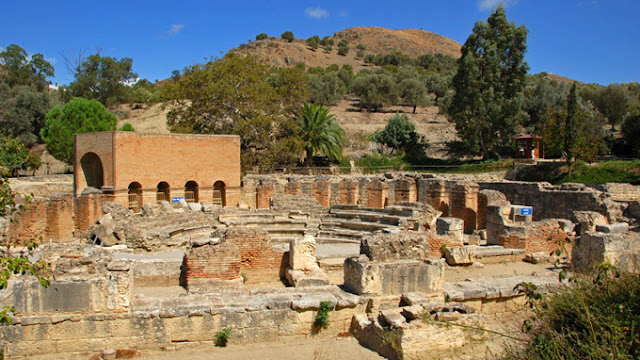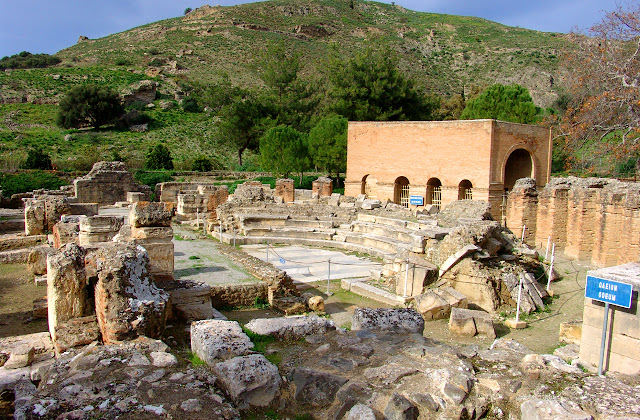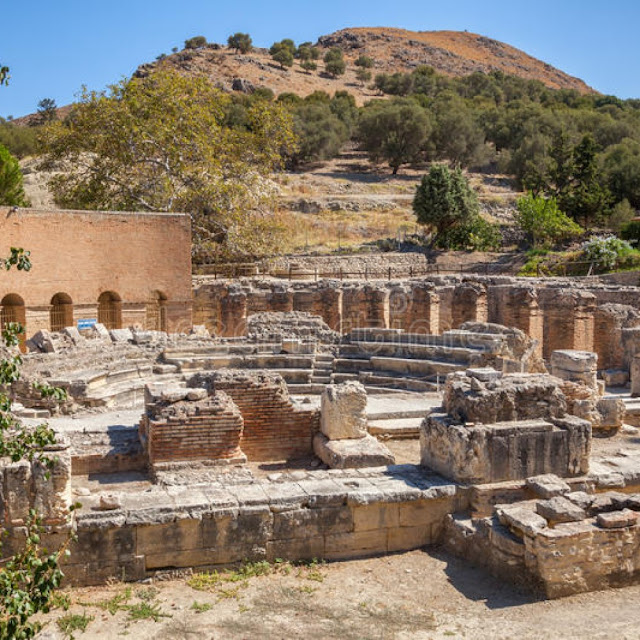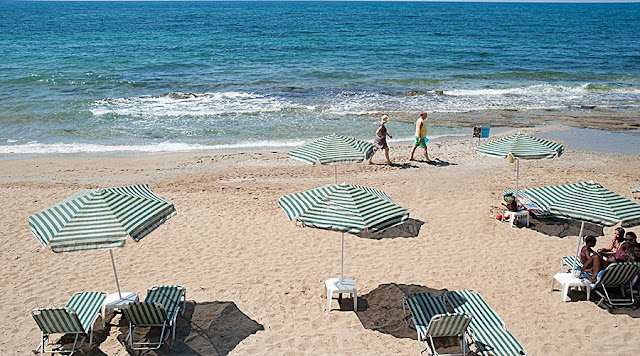Ancient Gortyn
The archaeological site of Gortyn (or Gortys) is located 45km south of Heraklion, near the village Agii Deka and next to the road connecting Agii Deka with Mires. The city covered a large area on the sides of the river Mitropolianos (or Litheos), even today surrounded by the ancient olive grove of Gortyn.
The area was inhabited since 3000BC, while during the Minoan era it evolved as one of the largest cities of Crete. Indeed, in the 3rd century BC it surpassed Phaestus and managed to possess the harbor of Matala, while retaining its port in Levina (current Lentas) and Lassea (current Chrysostomos). The town reached its peak during the Roman Empire, when the Romans moved the capital of Crete and Cyrenaica (today’s Libya) in Gortyn. The city was finally destroyed by the Arabs in 828AD, after arounr 10 centuries of prosperity.
The city of Gortyn is one of the most important archaeological sites in Greece. The first archaeological works started in 1884 by the archaeologists Federico Halbherr and Stefanos Xanthoudides, after they discovered the Great Inscription of Gortyn.
THE PLANE TREE OF GORTYS
At the back side of the archaeological site, you will find a tall plane tree, which has something very rare. It is evergreen, unlike other deciduous plane trees, and has been the center of a fabulous myth. According to the Greek Mythology, this is the perennial plane tree of Gortyn under which Zeus and Europe mated mated. From this union, the three kings of Crete were born (Minos, Rhadamanthys and Sarpedon). Indeed, it is no coincidence that at Gortyn, several coins were found depicting Europe and Minos (or Zeus). Moreover, the name of Gortyn is believed to be related to Gortyn, the son of Radamanthys.
THE EXHIBITION OF THE STATUES
Near the parking place, a small room houses the Roman sculptures found in Gortyn. One of the most important statues probably depicts the emperor Antoninus Pius.













Σχόλια
Δημοσίευση σχολίου